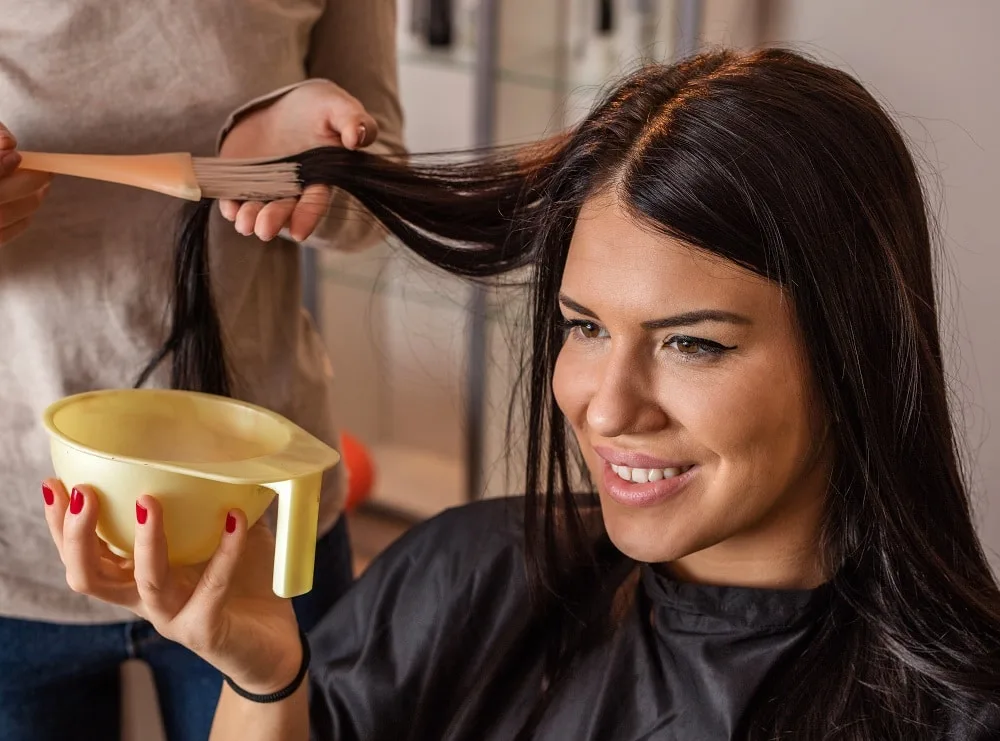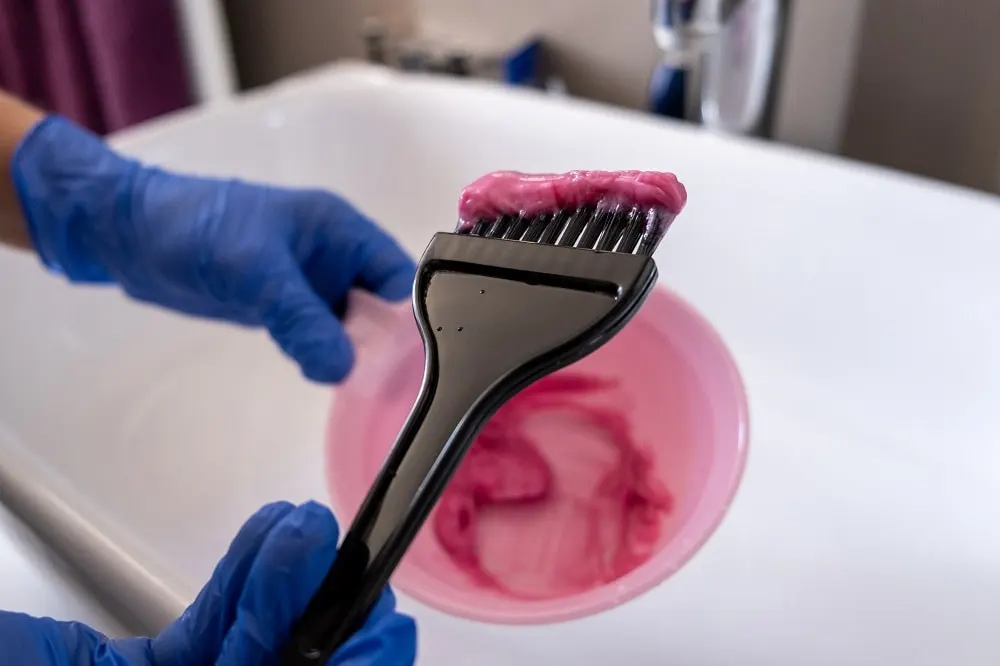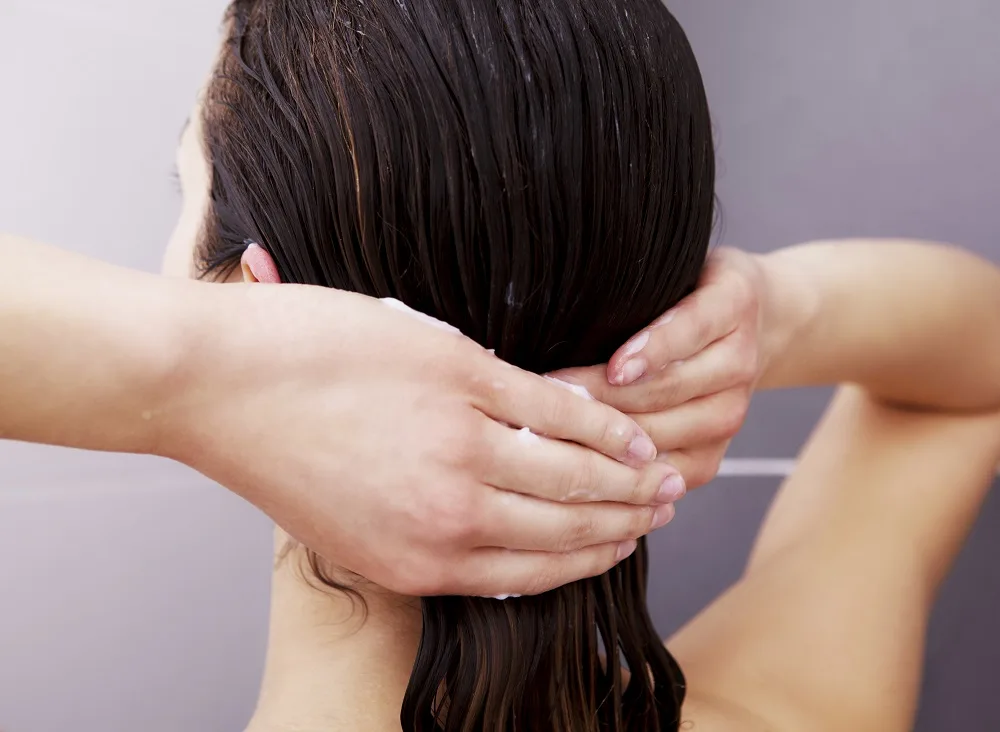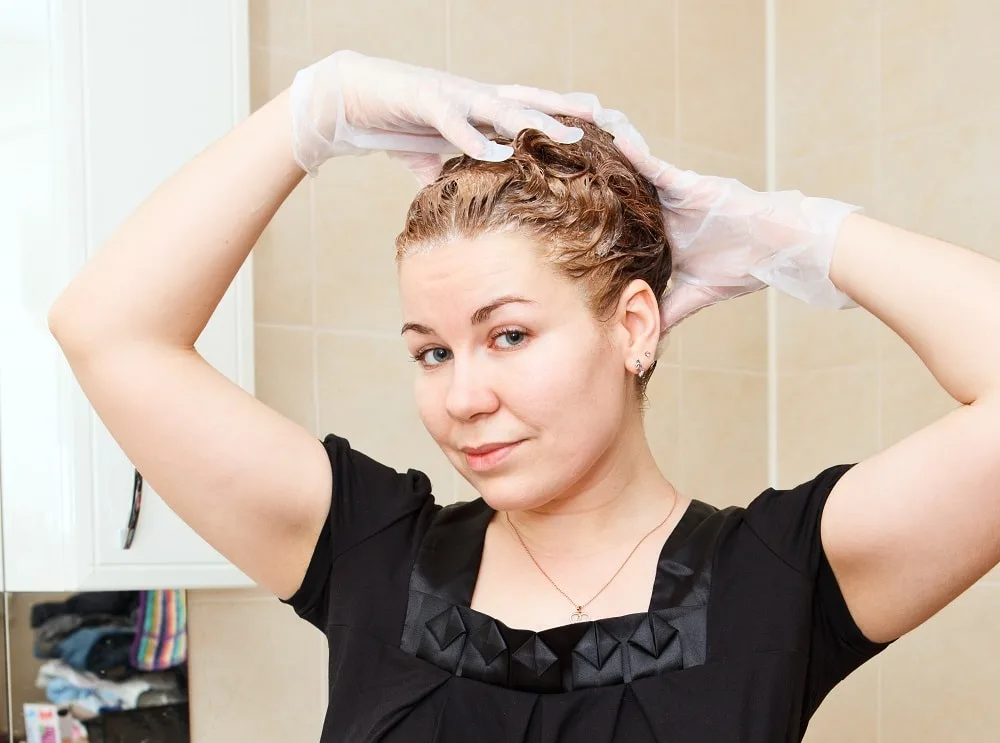You’re excited about your new dye job, but as you rinse it out, you notice distinct parts that are still undyed. Some parts of your hair didn’t dye– now what should you do to fix that?
Hair coloring processes fail for many reasons, most of which you can fix. You can double down straight away into repeating the hair coloring process. But unless you figure out the reason for the first failure, you could end up with the same poor results and damaged hair.
Why Did Some Parts of My Hair Not Dye?

Some parts of your hair didn’t dye because you used an expired dye, misapplied the coloring product, applied dye on greasy hair, your hair is damaged, or it’s too dark.
When you visit a hair professional with the complaint, “some parts of my hair didn’t dye,” they’ll probably ask a few questions. They’ll ask what products you used, how you used them, and any recent hair treatments you’ve had.
These questions help them get to the root cause of the failed dye job. Here are the common reasons some parts of your hair won’t color.
Using Expired Hair Dye
Like most care products, hair dye has an expiration date. Using it past its use-by date is guaranteed to produce bad coloring results.
Professional-grade hair dye lasts about two to three years when stored under the right conditions. These conditions include being away from moisture, direct sunlight, humidity, and heat.
Expired hair dye could cause an allergic reaction or leave discolored patches on your hair.
Using Coloring Products Incorrectly
You might be using the right hair products but misapplying them. Common hair coloring mistakes include applying the wrong developer, using too little product, and removing the dye before the hair processes.
Developers open the hair cuticle, allowing color to penetrate the hair shaft. The right developer depends on whether you are going from a darker to a lighter shade or vice versa. Going from darker to lighter shades requires high-volume developers to be effective. Most hair dyes recommend the developer on the packaging.
You could also end up with some parts of your hair not dyed if you use insufficient hair dye. The rule is to saturate all your hair strands generously with the product.
Saturate your hair with product and leave it for the longest recommended time to process. You start counting the processing time after applying dye to all your hair.
Damaged Hair
You might be using the right products. But if your hair is damaged, you cannot prevent uneven coloring after a dye job. Chlorine in swimming pools, sunlight, heat, and chemical treatments damage your hair.
When damaged, your hair becomes more porous, dry, and brittle. These factors make it hard for hair to hold color when dying.
Coloring Greasy Hair

Hair colorists recommend applying hair dye on unwashed hair. Such hair has natural oils that protect the hair and scalp during dyeing.
But, greasy hair with a buildup of products, oil, and silicones will not take color as desired.
Instead of penetrating your hair strands, the dye acts on the grease and slips off your hair. That leaves you with inconsistent hair coloring.
Washing hair with hard water could be the reason some parts of your hair didn’t dye. Hard water causes a buildup of minerals in your hair. These minerals create a film that prevents coloring from reaching your hair.
Your Hair Is Too Dark
Dark hair is not a problem, but it takes some time to dye it, especially when moving to a lighter color. Bright colors like pink, yellow, or orange are less likely to show on your hair.
3 Easy Fixes for the Parts of Hair That Won’t Dye
If some parts of your hair didn’t dye, use one of the below three fixes to get those dyed.
Use the Right Hair Products

Repeat the coloring process with the right hair coloring products if you used the wrong products the first time.
Start by choosing a new hair dye. You’ll know the dye is fine to use if:
- It smells like ammonia
- It has an even consistency
The same applies to the developer. Choose a product that’s still good to use. When choosing a developer, consider what color you want to achieve. If you are moving from a dark to a lighter color, you will need level 30 or 40 developers.
Consult your hair colorist if you need clarification on your choice of developer. They will guide you on your hair type and the best way to achieve the desired color.
Your current hair color also determines the shade of hair dye to choose. Lighter colors have a hard time showing on darker hair. Consult your hair colorist if you need clarification on the best dye for your hair color.
Prepare Your Hair for Coloring

You can improve the dyeing results drastically by preparing your hair before coloring. The first preparatory step is to ensure your hair is in the best health for a color job.
Damaged hair cannot hold on to color. It may also suffer more damage from dyeing. Nourish and repair your hair using cuticle repairs, hair treatment masks, and bond builders a few weeks before a coloring job.
Deep condition hair if it’s prone to dryness. The moisture from the deep conditioning treatment will allow it to take color better and uniformly. Hair masks are also a good idea if you have moderately-damaged hair.
These products repair your hair structure, offering a healthy foundation for hair coloring. Use protective products such as Olaplex to protect your hair during the coloring process.
Pre-wash hair the night before with gentle shampoo if your hair has grease or product buildup.
Another preparatory step to take is to section your hair. Sectioning allows you to cover your head without missing any parts. Section into four parts and divide into smaller sections as you apply a generous amount of hair dye.
Leave the Hair Dye in for the Required Time

Some parts of the hair didn’t dye, the reason could be that you removed the hair dye sooner than required. Hair coloring kits have instructions on how long to leave in hair dye.
In most cases, the recommended time is 30-45 minutes. Before counting down the processing time, apply the hair dye generously.
Hair coloring, especially permanent hair dye, works on your hair in successive stages. In the first few minutes, the product penetrates the hair cuticle, lifts your natural hair color, then deposits color into your hair.
The application time may vary depending on your hair type. For instance, gray hair is coarser and resistant to color, requiring maximum processing time. Virgin and unprocessed hair, in contrast, take up new colors faster. So, you should leave the product in for a shorter time.
Pre-colored hair will take longer to process. So, leave the dye in for about 35-45 minutes for the best results.
The type of dye used also affects the processing time. Semi-permanent dye requires a shorter processing time than demi-permanent and permanent dyes.
Should I Re-Dye My Hair To Fix the Part That Won’t Dye?
You can re-dye hair to fix parts that won’t dye. But you should wait at least two to three weeks before re-dyeing your hair and six to eight weeks if you dyed damaged hair.
Hair dyes are harsh to your hair and cause some damage even to healthy hair. So, waiting before re-dyeing gives your hair time to rest and recover from the stress of dyeing.
Summary
If you process for a short time, use the wrong products, or have damaged hair, your hair won’t take color properly.
Choose the right products, prepare your hair, and leave the dye in for 30-45 minutes to ensure your hair takes on dye better. And if you’re unsure about anything, consult a hair professional for individualized advice.
